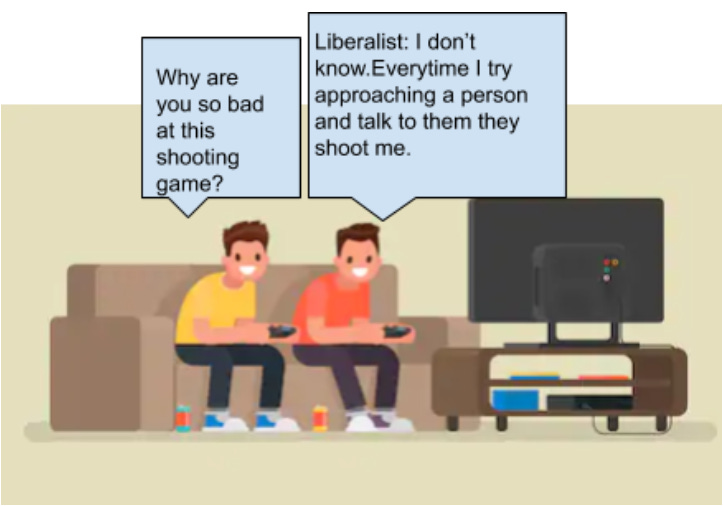Teaching a Primer on International Relations
Note- ,Sarah shares her experience of teaching an online course on International Relations to a group of students through this post. Links to her upcoming courses in Summer 2020 are shared at the end of the post.
To teach the International Relations course, I was waking up at 5am to teach a group of eager students on the other side of the planet. And, as I told the class on the last day, it was well worth it.
This course is a version of one I’ve taught for a range of students- in India, China, and the US. My normal job is a college professor, and the students in the Genwise course could have held their own in my college classroom. We talked about different actors in world politics, hard power/soft power, and theories of international relations- concepts that my college students find challenging.
Made by a student as part of a course assignment
One of my goals for this class is for students to start thinking about the world systematically. One way to do this is through a mini-project on power. How do we know how much power a state has? How do we systematically measure power? This mini-project asks students to think theoretically about power—specifically hard power (ex: military strength) and soft power (ex: cultural power). After generating some examples of each, the number of soldiers a country has counts as hard power but the global popularity of a specific actor counts as soft power, students were tasked with creating a measure for power.
As evidenced in the finished products; this project required complex thought. How do we measure something complicated systematically? How do we decide what indicators to include? For example, some students created a points-based system. The student allotted one point per military personnel and four points per war won by a state. For soft power, the measure wanted to give 4 points per Nobel Prize winner and three points for win in an international sporting event. Another student wanted to create a measure that would include fashion as a measure of soft power.
Creating and then critiquing a measure of power asks students to engage with the world critically and systematically, and this kind of systems thinking helps students in any number of fields, not just the humanities and social sciences.
These big-picture ideas were then applied to specific world problems- primarily Covid-19. We talked about public service announcements, the importance of international organizations, and ways to encourage mask wearing. After listening to Vietnam’s viral coronavirus song, we compared it to a 2014 song during the Ebola epidemic. With these in mind, we identified the effective parts of these announcements from a communication and public health perspective. How is the information presented? Is the information accessible? Is the song catchy? What information is provided? For instance, both of the songs provide important information. The Covid-19 song stresses handwashing and staying at home, whereas the Ebola song urges people to trust doctors in their communities to stop the spread of the virus.
Students dissected these songs, posters, and videos. Their work culminated in their own products, such as posters and poems, related to Covid-19 and other global problems like climate change. The students’ enthusiasm and creativity came through. In such a short time, students had created eye catching images and thoughtful reflections on the global epidemic.
“I liked the variety of knowledge I got exposed to. Also, I really liked the country ranking assignment. Because of that, I can now judge myself and not rely on other sources. Realism, liberalism and constructivism have made me understand the world.”, Sifar Jirgale, Student speaking about his experience in the course
As an instructor reflecting on the course, I was struck by younger students’ willingness to take chances. In thinking about the world more systematically, this course asks students to think about how specific events, actors, pieces of media, or even individual people fit into the world. As the world gets smaller, we need more people who are equipped to think through these complicated problems—whether climate change or public health crises or sustainable economic growth. These students’ impulses to try something new, even if it fails, gives me hope that we might yet solve some global problems.
I look forward to interacting with more young school students this summer.
Sarah's courses in Summer 2020
1) A Tale of 2 Democracies: India and the US
2) International Relations and Decision Making in Challenging Times




